Indigenous people drowned in reservoir waters
Thousands of reservoirs have been built in recent decades and most of them have caused terrible consequences in the inhabitants of the place, on the one hand because they have had to go in search of a new place of residence and, on the other, because in the name of economic development they have seen losing under water the testimonies of their history. Indigenous and tribal groups have no official recognition or legal resources to defend their interests. Therefore, in most cases, indigenous people not only lose their home, but also do not receive the least part of the benefit generated by the project.
Lost indigenous people
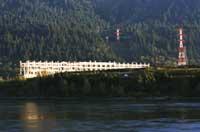
As in previous decades in the industrialized countries, in recent years, the planning and implementation of infrastructure in developing countries has not been concerned about the needs of the local inhabitants, nor about the changes that the projects have caused to the population. In many cases, reservoirs have only intensified these problems and caused damage and there are no lack of examples of affirmation. The report published by the World Reservoir Commission analyzes more than 60 cases in Brazil, Argentina, Mexico, Panama, Colombia, Guatemala, the United States, Canada and Siberia.
But in other countries that do not appear in this report, the situation is no better than where. In the Philippines, for example, all reservoirs built or at least proposed are located on 6-7 million hectares in which indigenous people live. The same is true in India, where although tribal groups account for only 8% of the population, 40-50% of the displacements motivated by development projects have had to be carried out. It is easy to explain how reservoirs have affected so many indigenous groups; river valleys are fertile, so these lands have been the location point of ancient civilizations. Consequently, it is no surprise that each built reservoir will drift away at least one group of indigenous people.
The transfer, in addition to causing great trauma and sadness, is the cause of the disappearance of indigenous and tribal groups. For example, in the Brazilian Waimiri-theater, the Indians of the group were about 6,000 in 1905, but due to the diseases and massacre they suffered, 80 years later, only 374 remained. In 1987, the waters of the Balbina reservoir flooded two of its villages and 107 people had to leave their residences and leave them adrift.
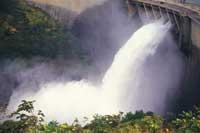
For indigenous people who are forced to leave their lands for the construction of reservoirs, it is very difficult to find a new location. Example of this is the case of the 100,000 indigenous chakmas that have forced to move the hydroelectric reservoirs of Chittagong Hill Tracts in Bangladesh. The project flooded two fifths of its land. As a result, 40,000 Chakma went to India. But, over the years, they have never achieved local nationality either for themselves or for their children. In addition, due to the shortage of land, there has been a conflyctic between Buddhist chakmas and Muslim Bangladesh, which has meant the loss of life of 10,000 people since the completion of the project in 1962.
But the damage caused by the reservoirs has not only been suffered by the indigenous people of developing countries. Reservoirs built on the Missouri River in the United States, for example, flooded their indigenous groups with 142,000 hectares of fertile land and several sacred sites. As a result, in addition to hunger, the indigenous people lost their greatest wealth and suffered a cultural trauma. The worst, in addition, is to see that with the passage of the year no attention increases to the indigenous. Proof of this are the two reservoirs and the two payouts to be made on the Churchill River in Canada. These projects will affect indigenous people who live on the banks of water but are not officially landowners.
The testimony of history also under water
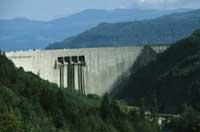
The historical testimony of many indigenous groups and much of the culture have drowned in the waters of the giant marshes. The large reservoirs have flooded temples, sacred elements, cemeteries and various architectural constructions. In addition, the patrimony not covered by the waters is affected by the necessary infrastructures for the transport of electricity, roads, railways and new populations of workers.
In 1998, for example, in India, the heritage of the 254 villages that would be flooded five years before the construction of the Narmada Sagar reservoir was analyzed. Thus, from the Lower Paleolithic to the Iron Age, hundreds of archaeological sites were identified, but the discovery was only in the identification phase. Unfortunately no recovery plan was made and everything was drowned under water.
During the construction of the South African reservoir of Ananda, the indigenous people lived a terrible similar event. The corpses found in the place where the reservoir was to be carried out were exhumed, removed, but without consulting the indigenous people all went into a hole. Of course, this caused the pain and anger of its inhabitants.
On the other hand, the high economic value of submerged equipment has brought with it theft. In fact, the erosion of the banks reveals architectural remains and in illegal explorations elements of great value are removed.
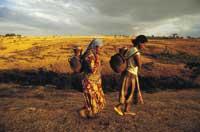
So many examples make it clear that with the construction of the reservoirs there are enormous losses, but the necessary measures are not yet taken. In the case of Turkey, for example, only 25 of the 298 projects have carried out studies of cultural heritage, of which only five of them have carried out a work of recovery before the flood. And time or budget is more important for companies that make reservoirs and there are not enough people prepared to carry out archaeological studies.
Requesting new laws
In many countries, the rights of indigenous people have not been properly consolidated, so they have not had sufficient protection. As has already been indicated, in the construction of the reservoirs, the indigenous people are forced to leave and the damage they suffer is not resolved at all with the aid offered to them.
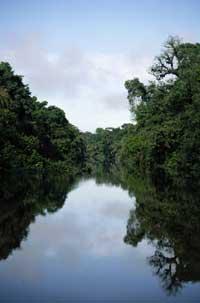
In the best cases, in exchange they are given some lands, but unfortunately they are not as fertile as theirs. This is the case of the indigenous Kuna and Emberga, when they built the Bayano reservoir of Panama. The Government of Panama repeatedly failed to comply with the agreements and were not granted fertile land or official document that the new lands belong to their property.
To prevent this kind of injustice from happening again, indigenous people demand new laws. These laws would protect their culture and heritage, and officially recognize their lands, and from now on those groups would have the word in development projects.
Apparently, this demand has been taken into account in some countries, and the constitutions recognize the fundamental rights of indigenous groups. But one thing is to apply the law and another very different. In fact, in Argentina, for example, although many regions have renewed legislation on cultural heritage, in the case of reservoirs there is no follow-up or it is not enough to preserve cultural wealth. Consequently, for the conservation of archaeological or cultural property, the affected communities will still have to request the World Commission of Reservoirs to implement the appropriate measures.
Published in the supplement Natura de Gara.
Buletina
Bidali zure helbide elektronikoa eta jaso asteroko buletina zure sarrera-ontzian











